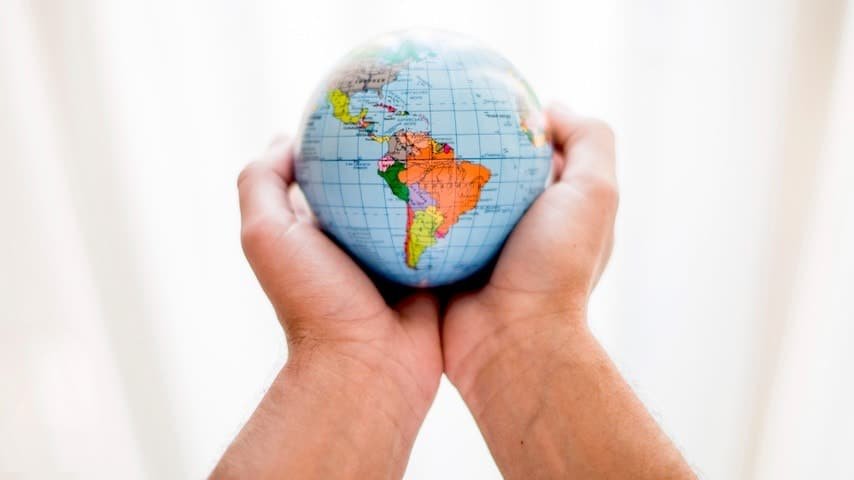Our global languages exist in various stages of vitality, showcasing the immense linguistic diversity that still persists. While languages like Spanish and Chinese continue to thrive with hundreds of millions of speakers, other languages such as Irish Gaelic, Manx, and Hawaiian face challenges due to diminishing speaker communities. Nevertheless, revitalization efforts are underway, supported by modern technologies, translation services, and the work of dedicated voice-over agencies.
Languages like Mambai, Tokelauan, Domari, and Nganguela, which are less known on the global stage, serve as a testament to the immense linguistic diversity that still exists.. Translation and localization services play a crucial role in the preservation of these languages, ensuring they continue to thrive in the digital age. Subtitling, for instance, enables multimedia content to be accessible to speakers of less dominant languages, thereby promoting their use and visibility on global platforms.
Translating More Than Words: The Art and Science of Language Adaptation
Translating content from one language to another is a fine art, akin to a dance, where every step is carefully choreographed, ensuring perfect harmony between meaning and expression. But this dance is not merely about swapping words; it ventures far beyond into the realm of cultural nuances, idiomatic expressions, and contextual implications. Translation is a process of cultural exchange, where the translator becomes a conduit, allowing two cultures to converse, understand, and appreciate each other.
Let’s consider the Arabic languages as an example—Egyptian Arabic, Saidi Arabic, Palestinian Arabic and Central Asian Arabic. All these dialects stem from Modern Standard Arabic, the lingua franca of the Arab world. Yet, each of these Arabic forms is a linguistic tapestry, woven with threads of unique vernacular intricacies that define their identity.
These intricacies profoundly influence translation and localization efforts. A translator isn’t just swapping words; they’re unraveling these threads, understanding their texture, color, and pattern, and re-weaving them into another language. It’s a process that demands not just linguistic prowess but also a deep understanding and respect for cultural diversity.
Now, let’s shift our focus to voice-over agencies, the unsung heroes of the multimedia world. Their job goes beyond lending voices to characters or narratives. These agencies are tasked with capturing the appropriate inflection, tone, and emotion that the original content holds and expressing them in another language.
Imagine translating a Caribbean Hindustani radio commercial into Swedish or a Norwegian podcast episode into Haitian Creole. It’s not a simple task. Voice-over artists need to capture the rhythm of the original language, mirror its melody, and reproduce its emotion in the target language.
The challenge here is two-fold: linguistic proficiency and cultural fluency. It’s not just about mastering the grammar and vocabulary of a language. It’s about understanding the culture that language embodies—the shared history, the collective memories, the folklore, the humor, and even the shared sorrow. This understanding ensures that the translated content resonates with the target audience in the same way it would with the original audience.
From East to West, North to South
Spanning across vast territories, from the Easternmost points to the Westernmost reaches, and from the Northernmost lands to the Southernmost corners, languages encapsulate the richness and diversity of human expression. They serve as a testament to the adaptability and ingenuity of our species, showcasing a myriad of fascinating characteristics and distinct features.
Traveling through the linguistic landscapes, one encounters a tapestry of captivating sounds, tones, and melodies. For instance, the mellifluous intonations of Italian dialects like Piemontese paint a picture of elegance and musicality, while the rhythmic complexities found in African languages such as Fulah and Soninke bring a sense of vibrant energy and cultural depth. The nasal phonetics of French, intertwined with its Creole descendants like Haitian Creole, English Grenadian Creole and French Grenadian Creole, add a touch of uniqueness and intrigue to the linguistic mosaic. Similarly, the Polynesian languages like Hawaiian, with their abundance of vowel sounds, evoke a sense of warmth, tranquility, and natural beauty.
Even within specific regions, languages exhibit remarkable variation and individuality, representing distinct worlds within themselves. Consider the multitude of Indian languages, each with its own captivating essence. Hindi, with its Devanagari script, carries the weight of history and serves as a unifying force for millions. Kannada, with its intricate grammatical structures, weaves a tapestry of precision and complexity. Bhili, with its deep cultural connotations, preserves the heritage and traditions of its speakers. Konkani, with its unique script and vocabulary, embraces its coastal roots and resonates with the rhythms of the sea. Oriya, with its rich literary heritage, reflects the intellectual prowess and artistic finesse of its people. And Rajasthani, with its poetic expressions and desert-inspired imagery, embodies the spirit of resilience and grandeur.
Languages, in their immense linguistic diversity and remarkable intricacy, provide a window into the multitude of human experiences, histories, and cultures. They serve as bridges connecting people, allowing for the exchange of ideas, emotions, and stories. From the bustling metropolises to the remote villages, languages shape our identities, foster a sense of belonging, and facilitate understanding and empathy in our globalized world. They are a testament to our collective human journey, showcasing our ability to adapt, create, and celebrate the richness of our shared humanity.
Final Thoughts
Our voyage through the intricate tapestry of languages sheds light on the immense significance of translation, subtitling, and localization in fostering effective communication and understanding within our interconnected global community. As a distinguished global voice-over agency, we are privileged to witness firsthand the vitality and resilience of languages, spanning from widely spoken global tongues like Spanish and Chinese, to the captivatingly unique and regionally specific languages such as the African Domaaki and Gamadia, as well as the Pacific Island languages of Tokelauan and Futunan.
Each translation meticulously crafted, every sentence expertly subtitled, and every script tailored for voice-over work represents a vital stride towards building a world where every language finds its rightful place and garners the respect it deserves. Our dedication extends beyond the mere act of translation; we aim to encapsulate the true essence of a language, unraveling its cultural richness and embracing its inherent linguistic diversity. From the mellifluous melodies of Mambai to the captivating complexities of Kyrgyz, every language adds a unique note to the grand symphony of human communication, in which we all play an integral part.
Let us always remember, in our world brimming with diverse tongues, that every voice matters, and every language holds profound significance. Each language contributes to the colorful mosaic of human expression and serves as a vessel for cultural identity, knowledge, and wisdom. Together, let us celebrate and cherish the linguistic diversity that unites us and defines the beauty of our collective human experience.
FAQs
What is linguistic diversity?
Linguistic diversity refers to the wide variety of languages spoken and used by different communities and cultures around the world. It encompasses the multitude of languages, dialects, and language variations that exist, highlighting the rich tapestry of human expression and communication.
Why is linguistic diversity important?
Linguistic diversity is of paramount importance as it reflects the cultural, historical, and social identity of communities. It preserves and promotes unique ways of thinking, diverse knowledge systems, and alternative perspectives on the world. Additionally, linguistic diversity fosters intercultural understanding, promotes inclusivity, and enriches our collective human experience.
How does linguistic diversity contribute to global understanding?
Linguistic diversity plays a crucial role in facilitating cross-cultural communication and understanding. It encourages empathy, respect, and appreciation for different ways of life and thought. By embracing and valuing linguistic diversity, we can bridge cultural gaps, break down barriers, and create a more interconnected and harmonious world.
What challenges arise from linguistic diversity?
While linguistic diversity is a source of pride and cultural heritage, it can also pose challenges. Communication barriers, limited access to resources in minority languages, and the potential loss of endangered languages are some of the challenges faced. However, with proper recognition, preservation efforts, and inclusive language policies, these challenges can be addressed.
How can we promote and preserve linguistic diversity?
Promoting and preserving linguistic diversity requires collective effort. Supporting education and language revitalization programs, promoting multilingualism, providing translation and interpretation services, and respecting the rights of language communities are some ways to foster linguistic diversity. Additionally, valuing and celebrating diverse languages and cultures can contribute to their preservation.
What role does translation and localization play in linguistic diversity?
Translation and localization are vital in ensuring that languages are accessible and understood across cultural and linguistic boundaries. They enable effective communication, facilitate cultural exchange, and promote inclusivity. Translation and localization help preserve and promote linguistic diversity by making diverse voices heard and languages respected on a global scale.
How can individuals contribute to celebrating linguistic diversity?
Individuals can celebrate linguistic diversity by embracing and learning about different languages and cultures, supporting language revitalization efforts, being open to multilingual experiences, and promoting inclusivity in their personal and professional interactions. Respecting and valuing linguistic diversity in our daily lives contributes to a more vibrant, interconnected, and tolerant global society.
How does linguistic diversity contribute to innovation and creativity?
Linguistic diversity fuels innovation and creativity by providing diverse perspectives and alternative ways of thinking. Different languages embody unique concepts, idioms, and cultural references, sparking innovative ideas and approaches. Embracing linguistic diversity enhances creativity, problem-solving, and encourages out-of-the-box thinking in various fields such as arts, sciences, and technology.
What are the benefits of embracing linguistic diversity?
Embracing linguistic diversity brings numerous benefits, including fostering cultural appreciation, strengthening social cohesion, promoting cross-cultural understanding, and encouraging empathy and tolerance. It also enhances global communication, facilitates international cooperation, and enriches intellectual and artistic endeavors. Ultimately, celebrating linguistic diversity leads to a more harmonious and interconnected world.
Embrace Linguistic Diversity with GoLocalise!
At GoLocalise, we are passionate about celebrating linguistic diversity and ensuring that every language finds its space and respect. Join us in our mission to bridge cultural gaps, foster understanding, and amplify diverse voices worldwide.
Whether you need professional translation services, accurate subtitling, or high-quality voice-over work, our dedicated team is here to assist you. We go beyond mere translation; we strive to tell the story of each language, preserving its cultural richness and embracing its unique characteristics.
Together, let’s create a world where linguistic diversity thrives and every voice is heard. Contact us today to embark on a transformative journey of communication, cultural appreciation, and global connectivity.
Choose GoLocalise and let’s celebrate the beauty and power of linguistic diversity together!












